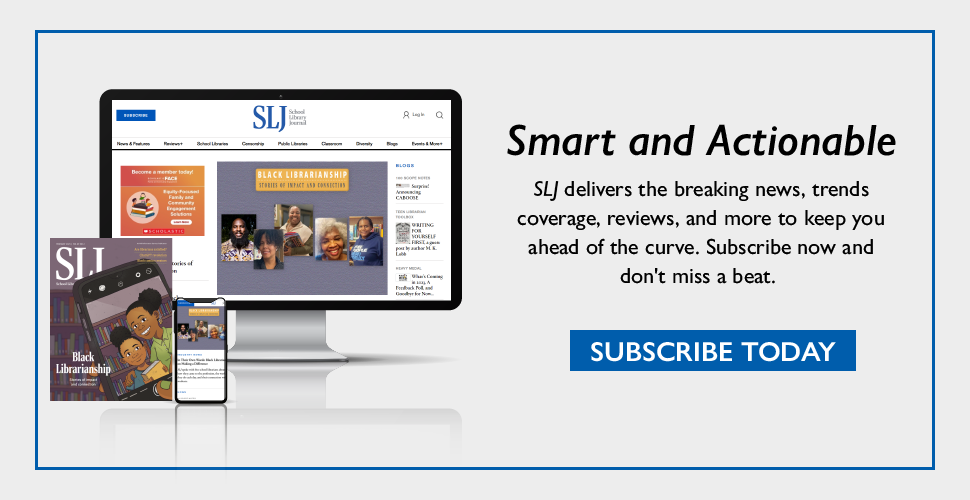Banned Books Are Often Diverse Books. Check the Stats.

Emily Knox
This year’s Banned Books Week theme, diverse books, has been on my mind for some time. As Jamie LaRue, director of the American Library Association’s (ALA) Office for Intellectual Freedom, has noted, defining diversity is difficult. However, the definition used by the organization We Need Diverse Books is succinct and inclusive: “We recognize all diverse experiences, including (but not limited to) LGBTQIA, people of color, gender diversity, people with disabilities, and ethnic, cultural, and religious minorities.”
A new report from PEN America also explores book challenges and the lack of diversity in children’s literature. My own research focuses on intellectual freedom and censorship and, as I noted in an SLJ post last September, around half of the news alerts I receive about book challenges concern titles that center on diverse characters. The trend of targeting diverse materials has continued in 2016, with challenges to books such as The Perks of Being a Wallflower (MTV Books, 1999) and Morris Micklewhite and the Tangerine Dress (Groundwood , 2014).
The high number of challenges to these books is notable because there so few diverse books published in the first place. Data from the Cooperative Children’s Book Center shows that titles by and about people of color constituted only 25 percent of the 3,400 books received by the center in 2015. A study conducted in 2014 by Malinda Lo, an author and co-founder of Diversity in YA, showed that challengers often target diverse books in public institutions. Over the past year, I began researching why these books are subjected to more challenges than non-diverse books. One of my research questions focuses on the stated reasons for challenging diverse books and the relationship of these reasons to the diversity of the characters.
I decided to start with the ALA’s annual top 10 challenged book lists from 2001–2015. Twenty-nine diverse books appear a total of sixty-three times on these lists. I found that many of the reasons given for the challenges centered on topics that were essential to the diverse characters in the titles.

For example, of the 63 challenges, 10 were because the title in question depicted “racism.” These included I Know Why the Caged Bird Sings (Bantam, 1969), Fallen Angels (Scholastic, 1983), Whale Talk (Laurel Leaf, 2001), and The Absolutely True Diary of a Part-Time Indian (Little, Brown, 2007). Twenty-five challenges targeted books for depicting “homosexuality,” including The Perks of Being a Wallflower and Revolutionary Voices: A Multicultural Queer Youth Anthology (Alyson, 2000). These were challenged for reasons intrinsic to their subject matter.
I Know Why the Caged Bird Sings, Maya Angelou’s well-known memoir, describes her childhood in the Jim Crow south. Revolutionary Voices is a book that will, by definition, include homosexuality. This is a somewhat obvious statement, of course, but the fact that these books were challenged for being about diversity implies that these topics are inherently controversial. I also found the three most frequently stated reasons for challenging diverse books: for containing offensive language (36 instances), being sexually explicit (35 instances), and being unsuited for age group (36 instances).
As I wrote in my own book on challenges, Book Banning in 21st Century America (Rowman & Littlefield, 2015), these familiar reasons seem to be related to the nature of truth and realism in fiction and to what extent fiction, especially fiction for youth, should mirror the human experience. These challenges ask us to consider the place of naturalistic fiction in the juvenile and teen sections of the public library or in the school curriculum. Diverse books, by definition, center on the experiences of people who are not dominant in society, and it is not surprising that these stories will often include experiences that may make the reader uncomfortable in some way. It makes sense that a coming-of-age novel that centers on a teenage, Native American boy, such as The Absolutely True Diary of a Part-Time Indian, will include racism, offensive language, and sex. These books speak to the human condition.
I plan to continue researching why diverse books are targeted for challenges. An upcoming book I am editing about trigger warnings will touch on this topic, as I am concerned that media about diverse characters will be disproportionately given such labels. It is often difficult for people to express how the practice of reading affects them. My hope is that this research will help us understand why challengers target certain books and enable us provide the best possible responses when this happens.
Emily Knox, an assistant professor in the School of Information Sciences at the University of Illinois at Urbana-Champaign and author of Book Banning in 21st Century America, was awarded the Illinois Library Association Intellectual Freedom Award and was named a WISE Instructor of the Year in 2015. She is on the board of the Freedom to Read Foundation and the National Coalition Against Censorship.
Add Comment :-
RELATED
The job outlook in 2030: Librarians will be in demand
The job outlook in 2030: Librarians will be in demand
ALREADY A SUBSCRIBER? LOG IN
We are currently offering this content for free. Sign up now to activate your personal profile, where you can save articles for future viewing







